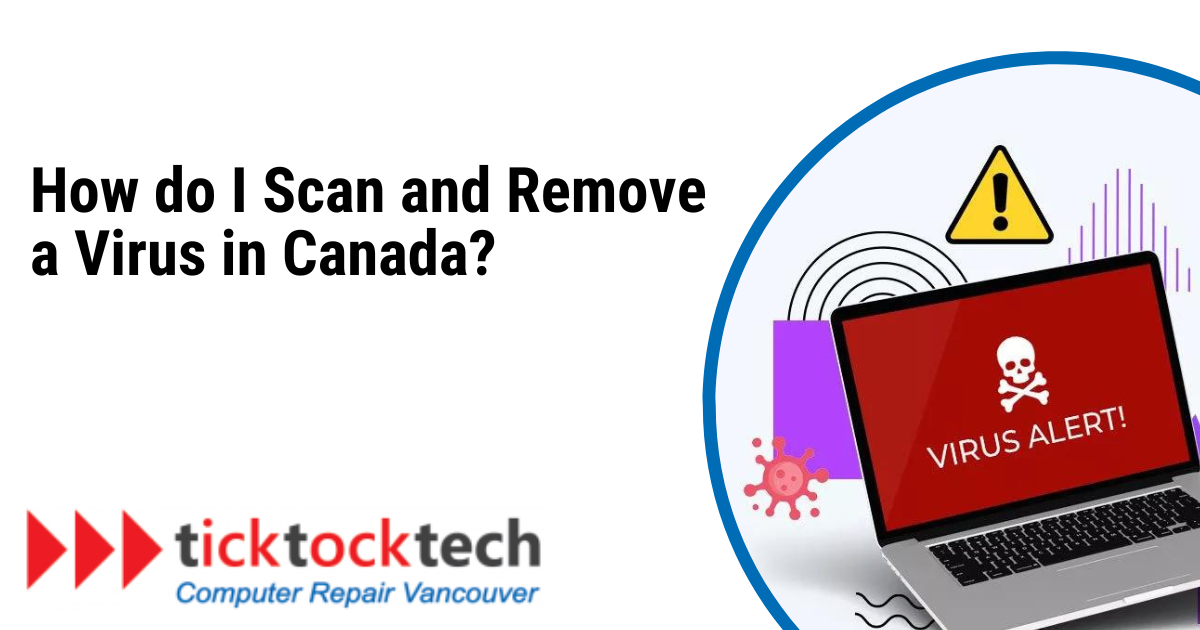It’s no news that virus and malware infections should be avoided and removed at all costs. When talking about viruses and malware, do attack software, and computer data. In the long run, if not treated, they would also affect the hardware. If you are in Canada, here is how you can quickly scan and remove your computer viruses of any type.
1. Set Up Reliable Antivirus Software
The best course of action for scanning and removing viruses from computers and laptops quickly is to install a reliable antivirus program that does regular scans. Having dependable antivirus software installed on your computer is the first line of defense against viruses and other infections. Cyber dangers including viruses, spyware, adware, and ransomware may be easily detected and removed with the help of these programs. Norton, Avast, Kaspersky, and McAfee are some of the best antivirus programs available.
2. Boot your computer in safe mode.
The first step is to boot your computer into Safe Mode. This mode prevents extraneous programs and services from functioning, making it easier to detect and remove infections. Here’s how to start your computer in safe mode:
- Start by restarting your computer.
- When your system restarts, hit the F8 key (or Shift + F8 on later Windows versions) before the Windows logo shows.
- Let’s release the key once the Advanced Boot Options menu appears.
- Use the arrow keys to select between “Safe Mode” or “Safe Mode with Networking.”
- Press Enter to proceed with your selection.
- Observe as your computer enters Safe Mode, which may be identified by its rudimentary interface.
3. Conduct a comprehensive system scan.
Use reliable antivirus software, such as Avast or NordScanner, to thoroughly scan your computer’s files, software, and memory for infections. Follow these steps to scan your system:
- Launch your antivirus or anti-malware application.
- Look for the function that initiates a full system scan.
- Choose the “Scan” or “Start Scan” option.
- Allow the scan to thoroughly analyze your system (patience is essential; this may take some time).
- Examine the scan results for any highlighted risks.
- Follow the steps to isolate or remove any detected malware.
- If the program advises, restart your computer to complete the eradication procedure.
- To protect yourself from developing malware risks, update your antivirus software regularly.

4. Eliminate identified threats.
When the scanning procedure is complete, you will be provided with any found malware. You must select whether to quarantine or remove these dangers depending on the software’s advice. Quarantining differs from deletion in that it isolates the malware, stopping it from causing harm but not eliminating it from your system.
5. Update your antivirus software.
It is critical to keep your antivirus software updated with the most recent malware definitions. Keeping your software up to date improves its capacity to identify and remove new malware strains. Enable update alerts in your program settings to be notified when new updates are ready for download. This procedure is critical to ensuring effective virus prevention in Canada.
6. Remove adware and potentially unwanted programs.
Adware and PUPs can cause undesirable system changes, annoying advertisements, and browser redirections. Conduct a targeted scan to detect these specific threats and eliminate any that are discovered. Addressing these nuisances will help protect your PC from additional security threats.
7. Delete temporary files and browser cache.
Malicious malware might exploit temporary files and your browsing history as hiding places. Eliminating these can help remove any hidden virus.
To remove temporary files:
- Start “File Explorer” on Windows or “Finder” on Mac.
- Navigate to the drive where your operating system is stored (for Windows, this is often the C: drive).
- Dive into the “Temp” folder and highlight everything within.
- To remove the temporary files, click the “Delete” button or right-click and choose “Delete”.
And to clear your browser cache:
- Launch your favorite web browser (such as Chrome, Firefox, or Safari).
- Enter the Settings or Preferences menu.
- Look for the “Privacy” or “History” sections.
- Locate the option for deleting your browsing data or history.
- Check the option for cached or temporary internet files.
- Select the time frame for which you want to erase the cache (from the last hour to all).
- To erase your browser cache, click the “Clear” or “Delete” option.
8. Keep your system and apps fresh.
Keeping up with software and operating system updates is critical for protecting your computer against infection. These updates address vulnerabilities that might be exploited by malware, offering a stronger barrier against attacks. Both your operating system and software packages routinely include updates and fixes that address security flaws, providing an additional layer of protection against viruses and malware.
- Click on “Turn Windows Firewall On or Off.”
- Choose the option to “Turn on Windows Firewall” for both private and public networks.
- Click “OK” to save the changes.
See Also: How to reset a laptop that won’t turn on.
Monitor new Developments. After eradicating the malware, keep an eye out on your computer for any symptoms of recurrence or strange behavior. Consider getting professional help if you experience ongoing problems or believe you may have a concealed infection.

9. Reset your browser’s default settings.
Malware frequently alters your browser’s settings, such as your homepage, search engine, or proxy settings. Malware-induced alterations can be reversed by resetting your browser to its original settings.
To reset your browser to its default settings, simply follow these steps:
- Navigate to your browser’s settings menu.
- Locate the “Advanced” or “Advanced Settings” area.
- Look for the option to reset or restore your browser’s settings.
- Press the reset button or link.
- Confirm your decision if asked.
- Allow the reset procedure to finish.
- Close and reopen the browser.
10. Enable Firewall and Real-time Protection.
Activating your computer’s firewall and real-time protection capabilities is critical for preventing viruses and illegal network intrusions.
To provide an extra layer of defense against computer viruses in Canada, switch on your firewall.
- Open the Control Panel on your PC.
- Choose either “System and Security” as well as “Security and Maintenance.”
- Select either “Windows Firewall” as opposed to “Windows Defender Firewall.”
Both of these actions are critical to ensuring the security and functionality of your computer in Canada. You can protect your computer from viruses and malware by changing browser settings and making sure your firewall and real-time protection are turned on.

